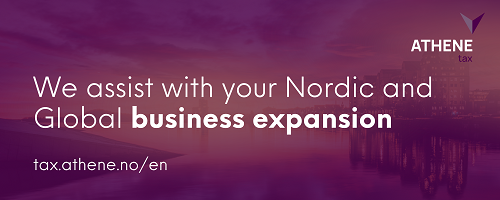Example: the product is transported from Sweden to another EU country
DK mediates a product between SE and DE in its own name through its online store. The product is not a new means of transport, is not subject to excise duty and is not included in an assembly delivery. SE is a taxable person registered for VAT in Sweden. DK is registered for VAT in both Denmark and Sweden. The end customer DE is a private individual in Germany. The product is transported directly from SE to DE (dropshipping). The intermediary DK is responsible for the transport and informs SE of its Danish registration number for VAT.
a) The cross-border transport is linked to the turnover between SE and DK (Chapter 5, Section 2 e, first paragraph ML). SE’s turnover is made within the country (Chapter 5, Section 2, first paragraph 1 ML). Turnover can be exempted from tax liability as an intra-Union turnover (Chapter 3, Section 30 a ML).
b) If DK instead notifies SE of its Swedish registration number for VAT, the cross-border transport is linked to the turnover between DK and DE (Chapter 5, Section 2 e, second paragraph ML). SE’s turnover is a turnover without transport that is made within the country (Chapter 5, Section 3 ML).
Until 1 July 2021, it applies that if DK’s sales to German end consumers do not exceed the sales threshold in Germany, the sale is a turnover in Sweden (Chapter 5, Section 2 a, Section 1 ML). If the turnover threshold in Germany has been exceeded, it is instead a turnover in Germany. The latter applies even if DK has not exceeded the threshold in Germany but has chosen to tax sales there.
From 1 July 2021, DK’s turnover to DE is an intra-Union distance sale and the turnover is made abroad (Chapter 5, Section 2 a, Section 1 ML). Since DK is established in Denmark, this applies even if the turnover threshold is not exceeded (cf. Chapter 5, Section 20 ML).
Example: the product is transported to Sweden from another EU country with a Swedish intermediary
SE1 mediates in its own name a product between DE and SE2 through its online store. The product is not a new means of transport, is not subject to excise duty and is not included in an assembly delivery. DE is a taxable person registered in Germany. The end customer SE 2 is a private person in Sweden. The product is sent directly from DE to SE2 (dropshipping). The intermediary SE1 is responsible for the transport and informs DE of its Swedish registration number for VAT.
The cross-border transport is linked to the turnover between DE and SE1 (Chapter 5, Section 2 e, first paragraph ML). SE1 makes an intra-union acquisition from DE (Chapter 2 a, Section 3 ML). SE1’s turnover is a turnover without transport that is made within the country (Chapter 5, Section 3 ML).
Example: the product is transported to Sweden from another EU country with a foreign intermediary
DK sells in its own name an item from its online store to SE. The product is not a new means of transport, is not subject to excise duty and is not included in an assembly delivery. DK orders the product from FR, which sends it directly to SE (dropshipping). FR and DK are taxable persons registered for VAT in France and Denmark respectively. DK is also registered for the union system in Denmark. The end customer SE is a private person in Sweden. The intermediary DK is responsible for the transport.
a) If DK is not or must be registered for VAT in France, DK needs to register in Sweden. If DK registers in Sweden and notifies FR of its Swedish registration number for VAT, the solution will be as in the previous example.
b) If DK is registered in France and notifies FR of its French registration number for VAT, the cross-border transport is linked to the turnover between DK and SE (Chapter 5, Section 2 e, second paragraph ML).
Until 1 July 2021, if DK’s sales to Swedish end consumers do not exceed the sales threshold in Sweden, sales are sales abroad (Chapter 5, Section 1, first paragraph ML). If the turnover threshold in Sweden has been exceeded, it is instead a turnover in Sweden (Chapter 5, Section 2, first paragraph 4 ML). The latter applies even if DK has not exceeded the threshold in Sweden but has chosen to tax sales here.
From 1 July 2021, DK’s turnover to SE is an intra-Union distance sale and the turnover is made in Sweden (Chapter 5, Section 2, first paragraph 4 ML). DK shall report the VAT through the Union scheme.
Source: skatteverket.se















